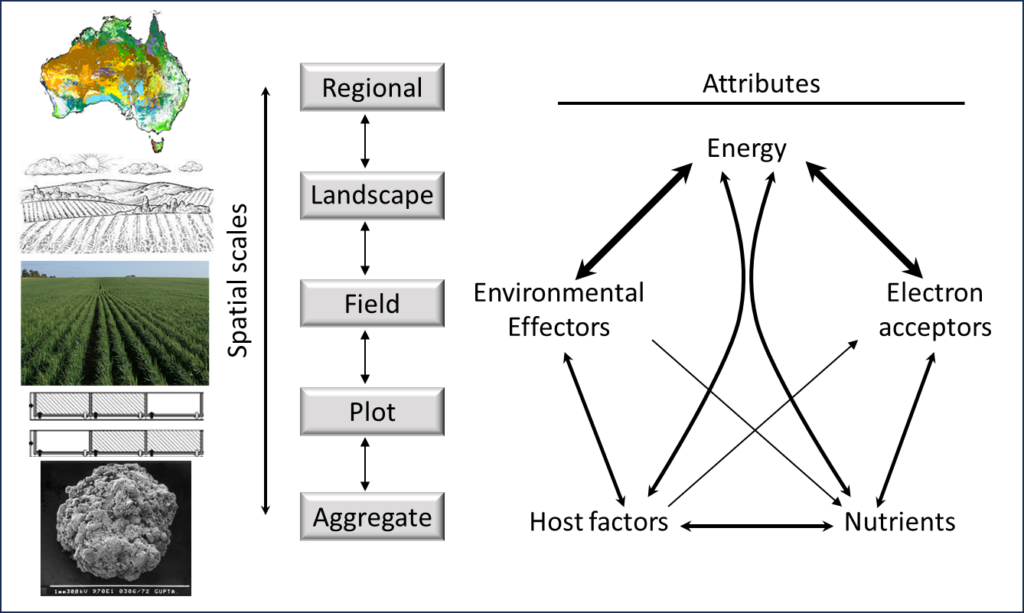Publication alert: Ranking environmental and edaphic attributes driving soil microbial community structure and activity with special attention to spatial and temporal scale
https://doi.org/10.1002/mlf2.12116
The incredibly complex soil microbial communities at small scales make their analysis and identification of reasons for the observed structures challenging. Microbial community structure is mainly a result of the inoculum (dispersal), the selective advantages of those organisms under the habitat‐based environmental attributes, and the ability of those colonizers to sustain themselves over time. Since soil is protective, and its microbial inhabitants have long adapted to varied soil conditions, significant portions of the soil microbial community structure are likely stable. Hence, a substantial portion of the community will not correlate to often measured soil attributes. We suggest that the drivers be ranked on the basis of their importance to the fundamental needs of the microbes: (i) those that supply energy, i.e., organic carbon and electron acceptors; (ii) environmental effectors or stressors, i.e., pH, salt, drought, and toxic chemicals; (iii) macro‐organism associations, i.e., plants and their seasonality, animals and their fecal matter, and soil fauna; and (iv) nutrients, in order, N, P, and probably of lesser importance, other micronutrients, and metals.
The relevance of drivers also varies with spatial and time scales, for example, aggregate to field to regional, and persistent to dynamic populations to transcripts, and with the extent of phylogenetic difference, hence phenotypic differences in organismal groups. We present a summary matrix to provide guidance on which drivers are important for particular studies, with special emphasis on a wide range of spatial and temporal scales, and illustrate this with genomic and population (rRNA gene) data from selected studies.

Ranking environmental and edaphic attributes driving soil microbial community structure and activity with special attention to spatial and temporal scale
Read the full research article here – https://doi.org/10.1002/mlf2.12116
Manuscript authors – Gupta Vadakattu and James M. Tiedje
See more research on how harnessing microbes are benefiting agricultural plant health here:
